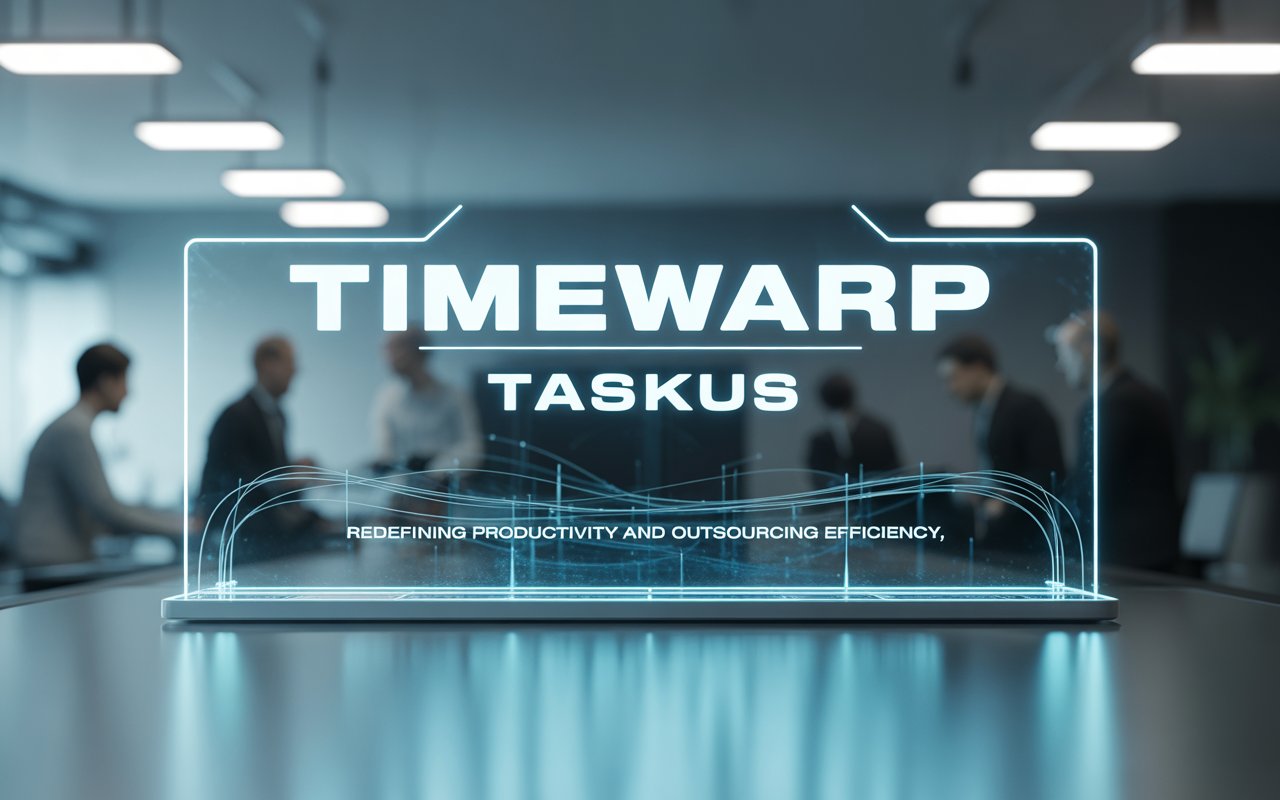Timewarp TaskUs: Redefining Productivity and Outsourcing Efficiency
Introduction
In today’s fast-moving digital landscape, businesses are constantly seeking ways to stay ahead—optimizing workflows, cutting costs, and scaling with speed. This is where timewarp taskus comes into play. More than just a catchy phrase, timewarp taskus represents a modern approach to outsourcing and business process solutions that leverages technology, innovation, and workforce management to deliver outstanding results. By combining automation, flexible staffing, and advanced task management strategies, timewarp taskus has become a transformative concept in the outsourcing industry.
What is Timewarp TaskUs?
At its core, timewarp taskus refers to a methodology of accelerating business operations, much like “warping time,” to achieve results faster without compromising on quality. It represents how TaskUs, a well-known outsourcing provider, has integrated technology-driven processes and human expertise to deliver rapid, scalable, and highly efficient solutions.
Instead of the traditional outsourcing model that is often rigid, timewarp taskus focuses on agility, flexibility, and precision. It blends advanced task management, AI-driven tools, and highly trained professionals who can handle complex workloads in record time.
The Importance of Timewarp TaskUs in Modern Business
Why has timewarp taskus become so crucial in today’s business ecosystem? Because speed and efficiency now determine competitiveness. Organizations that can complete projects faster, streamline support systems, and improve customer experiences ultimately gain an edge.
Key benefits include:
- Faster Turnaround Times: Workflows are accelerated through smart delegation and automation.
- Scalability: Businesses can handle sudden demand spikes without losing productivity.
- Cost Efficiency: Reduces overhead by outsourcing routine but time-intensive tasks.
- Enhanced Quality: AI and human expertise combine to maintain accuracy while boosting speed.
- Focus on Core Goals: Leaders can focus on strategy and growth while repetitive tasks are handled externally.
How Timewarp TaskUs Works
To better understand timewarp taskus, let’s look at how the model operates:
- Task Segmentation – Large projects are broken into smaller, manageable units.
- Technology Integration – Automation, machine learning, and analytics tools accelerate repetitive processes.
- Skilled Workforce Deployment – Specialized teams are assigned based on domain expertise.
- 24/7 Support Model – Global teams ensure round-the-clock availability, cutting downtime.
- Continuous Monitoring – Real-time analytics optimize workflows and flag inefficiencies early.
This combination creates a dynamic system where speed, accuracy, and flexibility are achieved simultaneously.
Real-World Examples of Timewarp TaskUs in Action
To illustrate, here are industries where timewarp taskus shines:
- E-commerce: Handling seasonal spikes during holiday shopping with automated inventory management and customer support.
- Fintech: Providing fraud detection and compliance checks faster than manual-only models.
- Healthcare: Streamlining medical billing and patient data processing while ensuring compliance.
- Gaming & Tech: Offering 24/7 support for global user bases without long wait times.
Common Mistakes and Challenges with Timewarp TaskUs
While effective, timewarp taskus can fail if not implemented properly. Some common pitfalls include:
- Over-Reliance on Automation: Neglecting human oversight can lead to errors in complex scenarios.
- Poor Communication: Misaligned expectations between internal teams and outsourcing partners can slow progress.
- Lack of Customization: A one-size-fits-all approach rarely works across industries.
- Security Concerns: Outsourcing sensitive data requires strict compliance and cybersecurity protocols.
Businesses adopting timewarp taskus must remain vigilant about balancing speed with quality and security.
Tips, Strategies, and Future Trends for Timewarp TaskUs
To maximize the potential of timewarp taskus, organizations should:
Tips & Strategies
- Adopt a Hybrid Model: Combine AI automation with human intelligence for balanced results.
- Prioritize Data Security: Implement strict compliance standards and encryption.
- Track Performance Metrics: Monitor KPIs such as turnaround time, accuracy, and customer satisfaction.
- Encourage Collaboration: Regular communication between in-house and outsourced teams ensures alignment.
Future Trends
Looking forward, timewarp taskus is expected to evolve further with:
- Deeper AI Integration: Smarter bots handling even more complex tasks.
- Quantum Computing Influence: Future computing power may redefine speed standards.
- Hyper-Personalization: Outsourcing tailored specifically to individual business needs.
- Sustainability Focus: Energy-efficient outsourcing models to meet green business goals.
FAQ: Timewarp TaskUs
Q1: What industries benefit the most from timewarp taskus?
A: E-commerce, fintech, healthcare, gaming, and customer support-heavy industries benefit most.
Q2: How does timewarp taskus improve productivity?
A: By combining automation and skilled outsourcing, businesses can complete tasks faster and with greater accuracy.
Q3: Is timewarp taskus secure for sensitive data?
A: Yes, provided companies implement proper compliance measures, encryption, and partner with reliable outsourcing firms.
Q4: Does timewarp taskus replace human workers?
A: No, it complements them by automating repetitive tasks while allowing humans to handle decision-making and creative work.
Q5: What’s the future of timewarp taskus?
A: Expect more advanced AI, industry-specific customization, and stronger emphasis on security and sustainability.
Conclusion
In summary, timewarp taskus is more than an outsourcing trend—it’s a revolutionary approach to achieving speed, efficiency, and scalability in modern business. By blending technology and human intelligence, companies can streamline operations, reduce costs, and remain competitive in a fast-paced global market.
For businesses seeking to accelerate growth without sacrificing quality, adopting a timewarp taskus model can be a game-changer. The key lies in balancing automation with human expertise, maintaining security, and adapting strategies for long-term success.




Post Comment